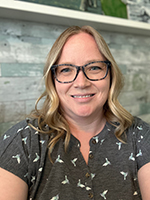




The purpose of "International Perspectives on Three Innovative Ways to Improve Students’ Learning Experience" is to provide insights on the key elements, technological or non-technological, to empower students' learning from an international perspective. International speakers will bring first-hand stories and insights to the audience. We seek to identify ways that educators and administrators can utilize mobile Augmented Reality (the technology behind Pokemon Go and Instagram Filters) to bring textbooks, workbooks, and brochures to life, creating 3D holographic overlays that project onto printed materials. Already in use in museums and retail stores, it is worthwhile for administrators, instructional designers, and publishers to examine how mobile AR can be used to make textbooks and printed learning materials more interactive. Examples of mobile AR tools examined include: 8th Wall, Augmented Classroom, Narrator AR, CoSpaces Edu, Catchy Words AR, World Brush, and 3DBear.
Mobile AR is already widely used in e-commerce and is gaining popularity in higher education marketing, so we examine ways that schools can deploy mobile AR to increase engagement, while reducing the cost and paper waste of print marketing.
For instructors, we explore examples of how mobile AR can be deployed in textbooks, handouts, and workbooks. This includes AR experience creator tools for educators, pre-packaged teaching materials with AR enablements, and function-specific AR tools (for example, apps that use AR to help students improve their handwriting).
This session will also include part of a Canadian initiative to bring coding into K-12 curriculum by embedding computational thinking skills into activities for different content areas. As part of the country’s “Innovation and Skills Plan” (2017), “CanCode” aims to provide opportunities for K-12 students to learn digital skills including coding, digital analytics, and digital content development, with a focus on inclusion of underrepresented groups. Through this initiative, Code to Learn “provides free materials to Canadian students and teachers that help them acquire skills in coding, robotics and computational thinking while developing global competencies. Three programs will be showcased: LYNX coding software, micro:bits, Climate Action Kits, and Your Voice is Power. We will feature resources and samples of student work with more discussion about the features of each resource and the concepts each one can teach, incorporating the latest research on computational thinking and deepening coverage of the ISTE Standards for Students.
Keishia Thorpe, Global Teacher Prize Winner 2021 and a Nobel Prize Educator, will present on how to help students build global competencies. Preparing students to be culturally and globally competent and practitioners of social justice is very important in today's modern world and requires that educators are technologically savvy to create and maintain connections and teach students how to navigate the world around them. The session will demonstrate how teachers use technology to help students to become global citizens, to prepare them for college and career and the constant changes in our society. The session will introduce classroom technology, not just as a learning tool, but also to empower students, to amplify their voices and keep them connected to people around them and the world at large. Some focal points are how to use technology to differentiate learning, improve equity and access for all students, Integrate inclusive practices, extended learning opportunities, connecting with other classrooms across the globe, communication and cultural experience and the implementation of blended learning.
Introduction 7 min
Keishia Thorpe - 10 min
Marcia Piquette - 10 min
Keating Sherry - 10 min
Q&A - as time permits - 10 min
http://jehdnet.com/vol-8-no-4-december-2019-abstract-17-jehd
https://slejournal.springeropen.com/articles/10.1186/s40561-022-00189-8
https://eric.ed.gov/?id=EJ1259691
https://www.ncbi.nlm.nih.gov/pmc/articles/PMC8978775/
https://ieeexplore.ieee.org/abstract/document/6758614
https://www.raspberrypi.org/blog/research-report-teaching-programming/